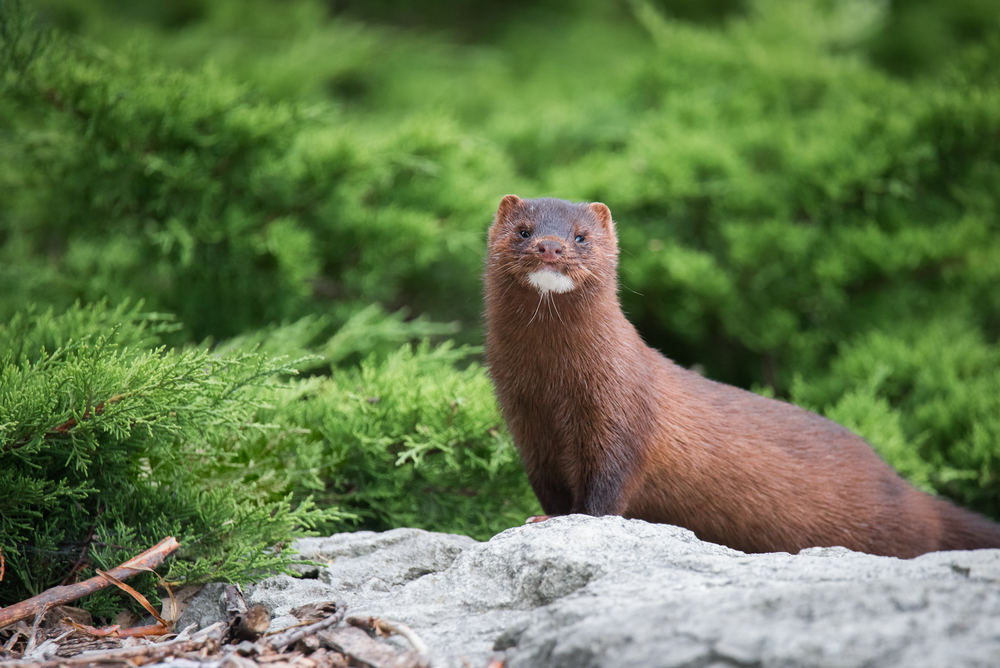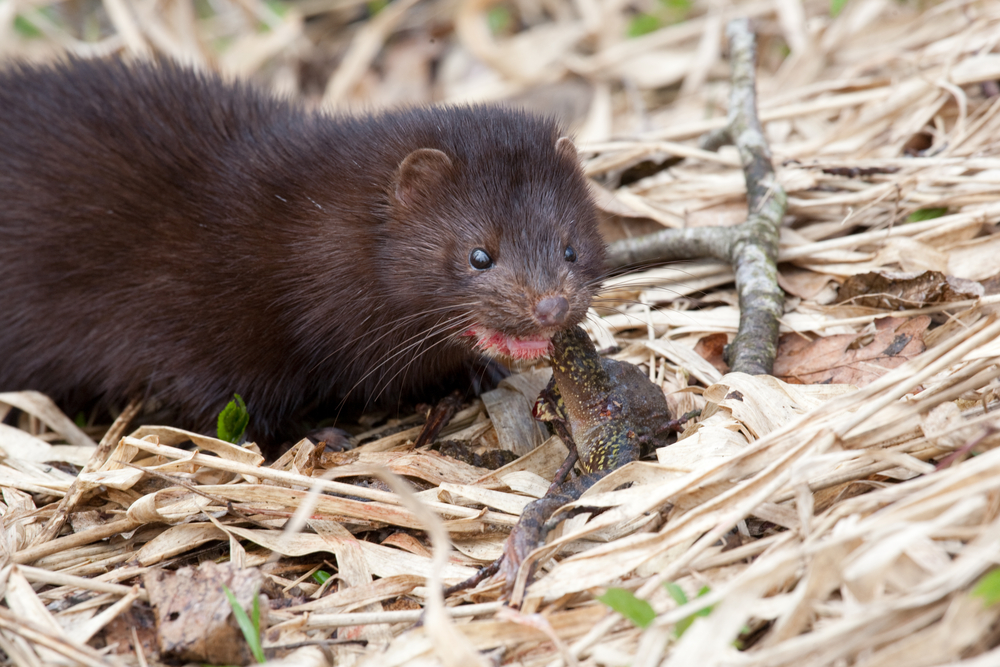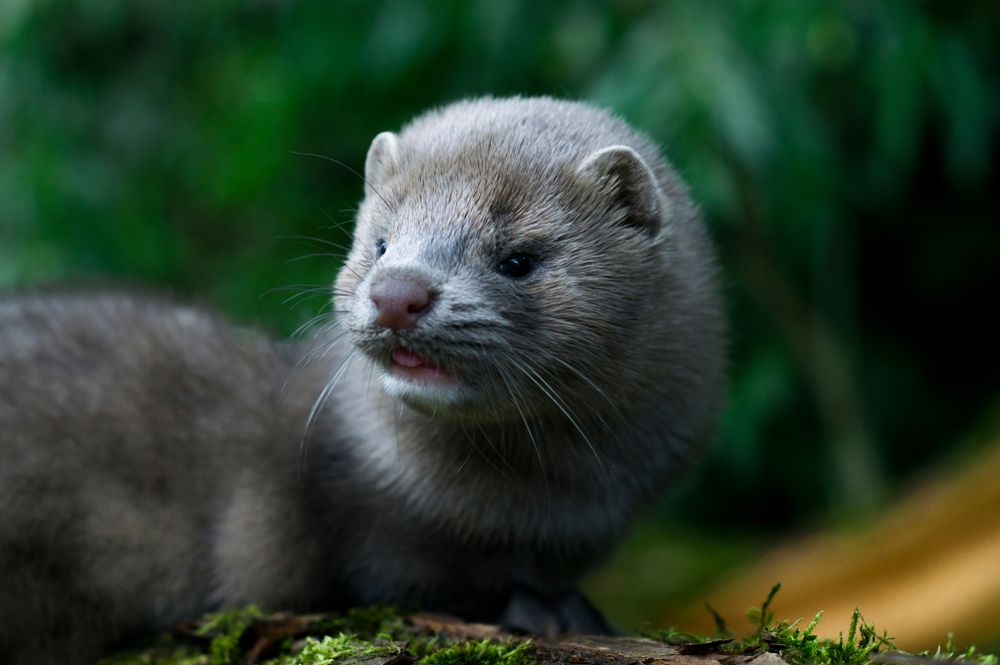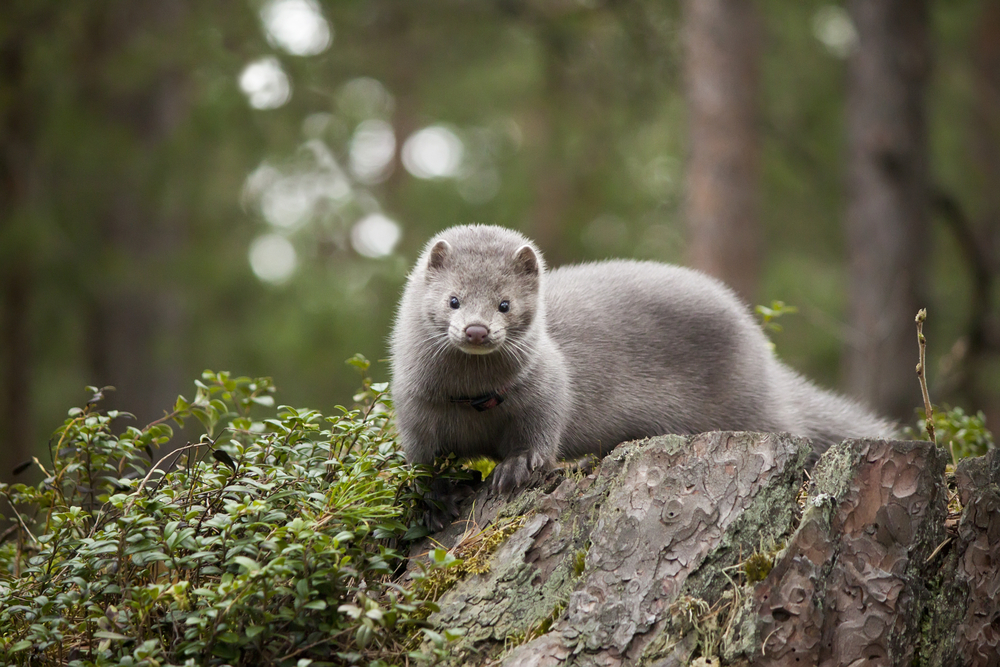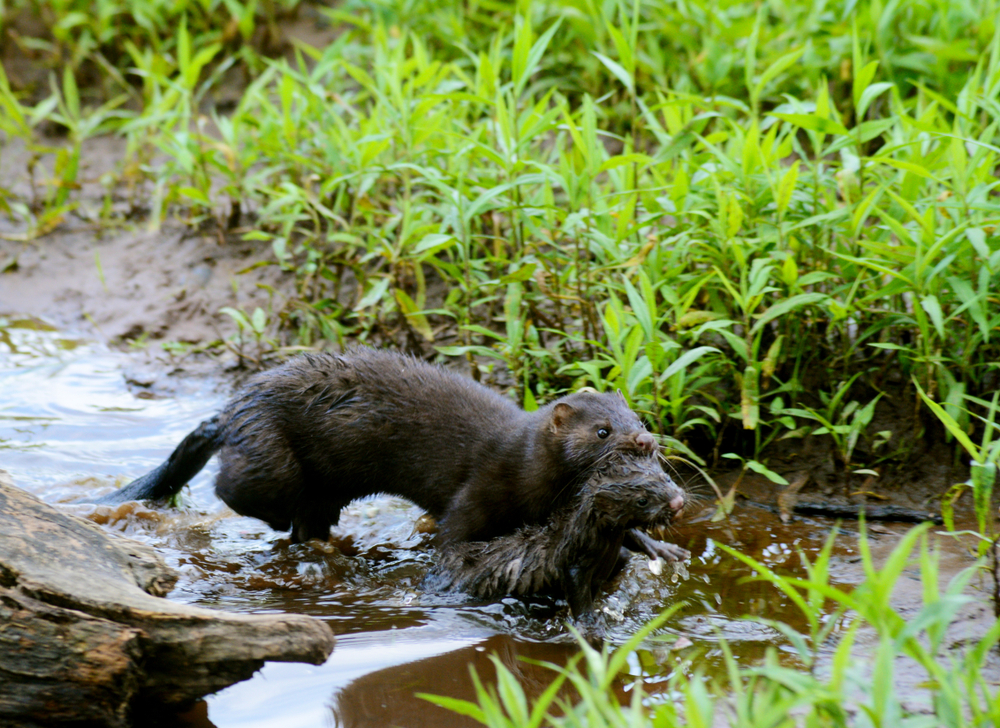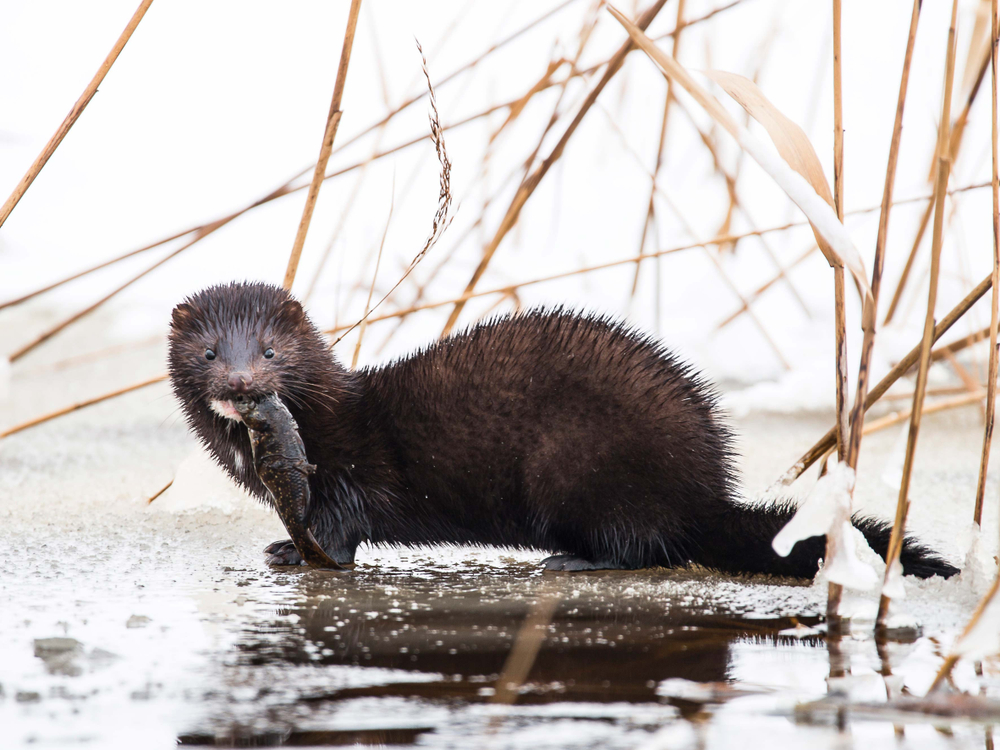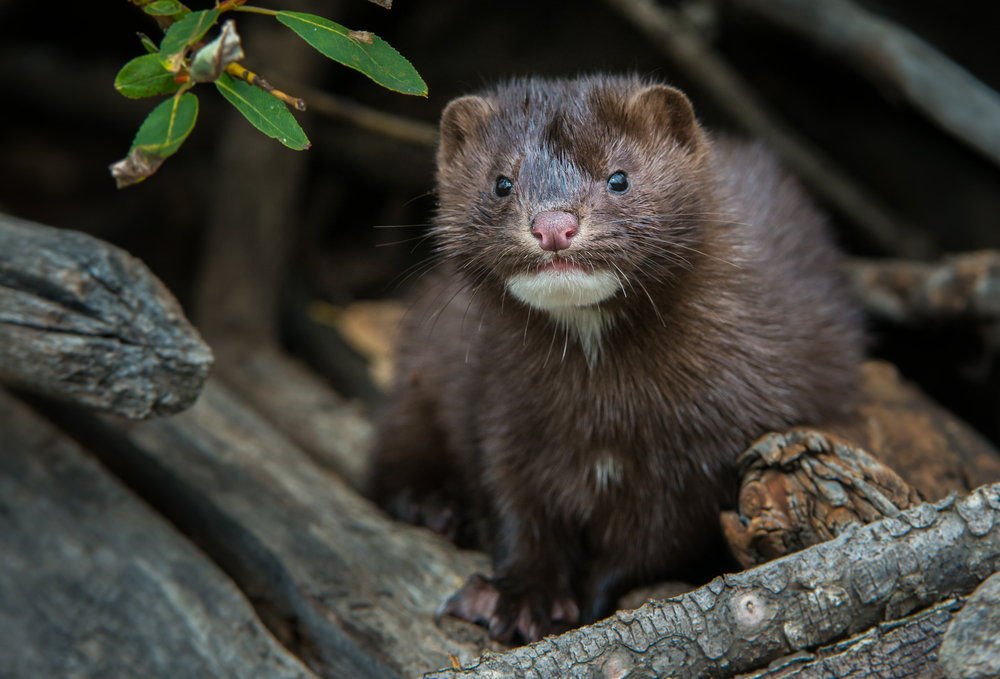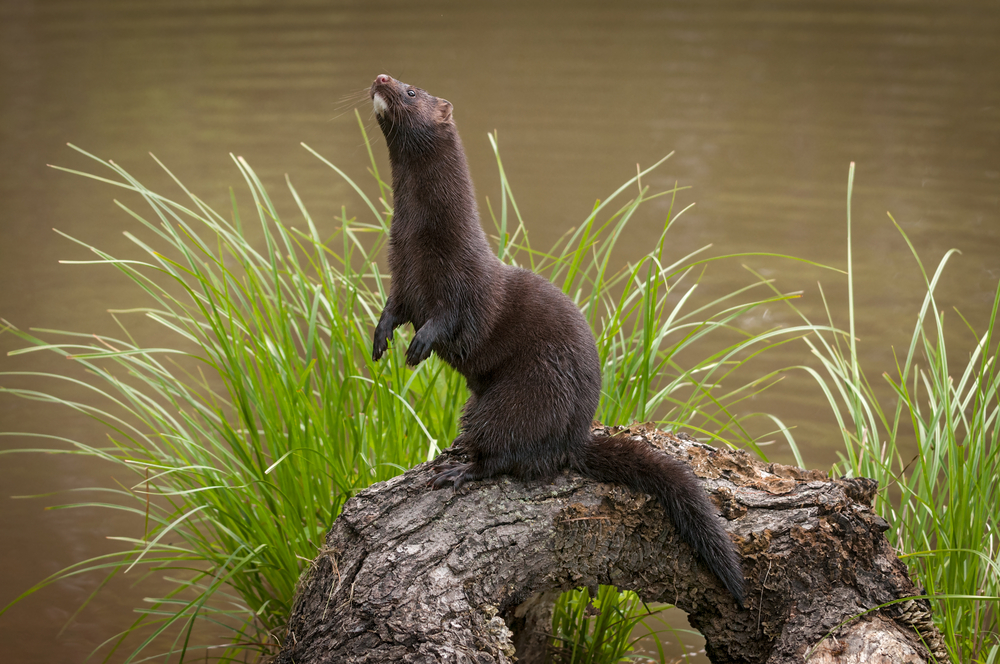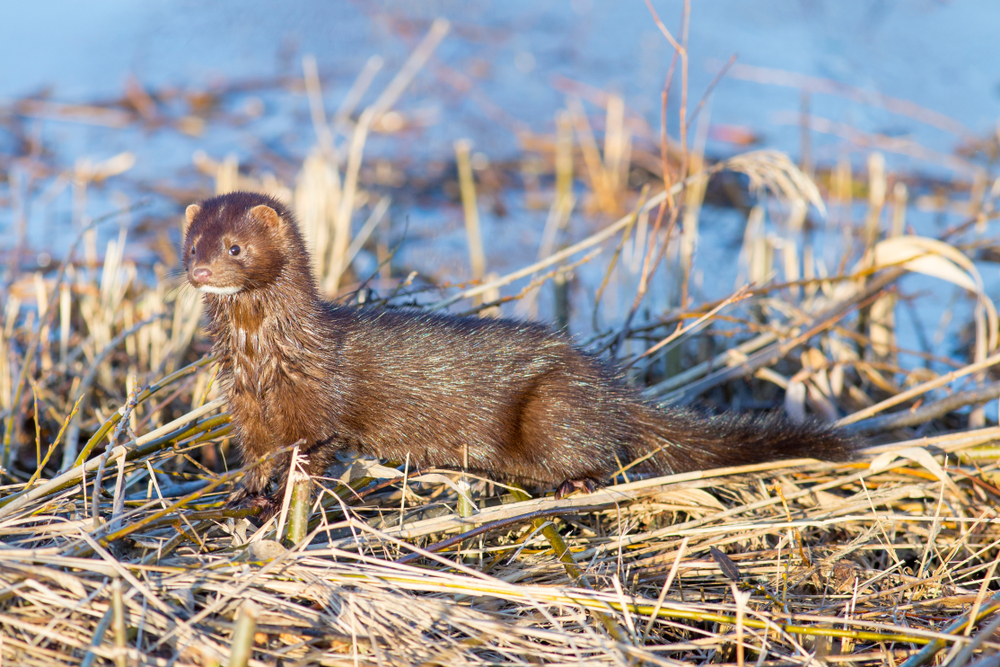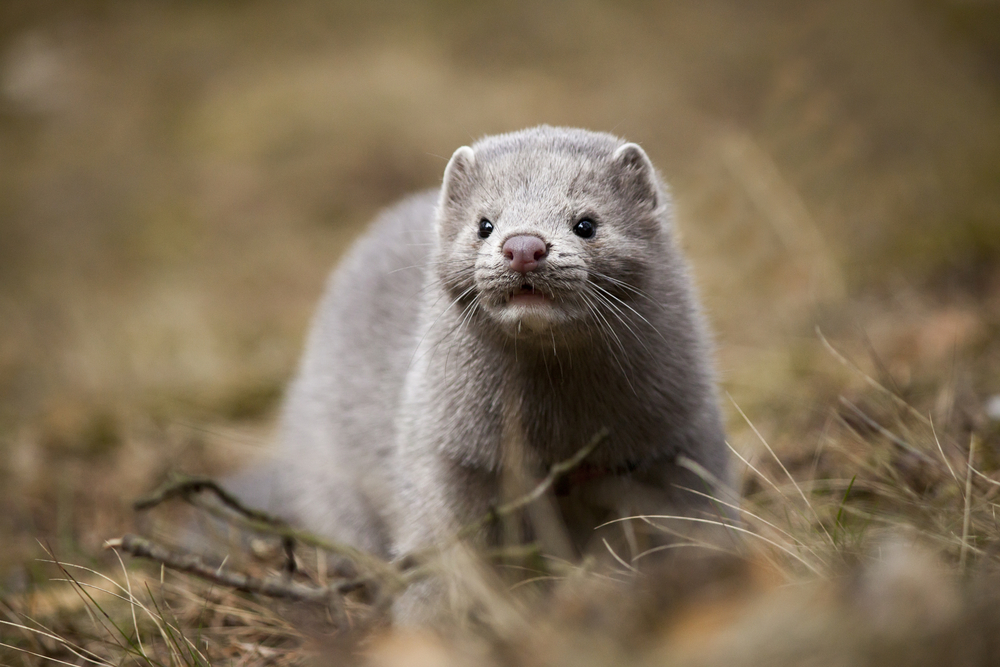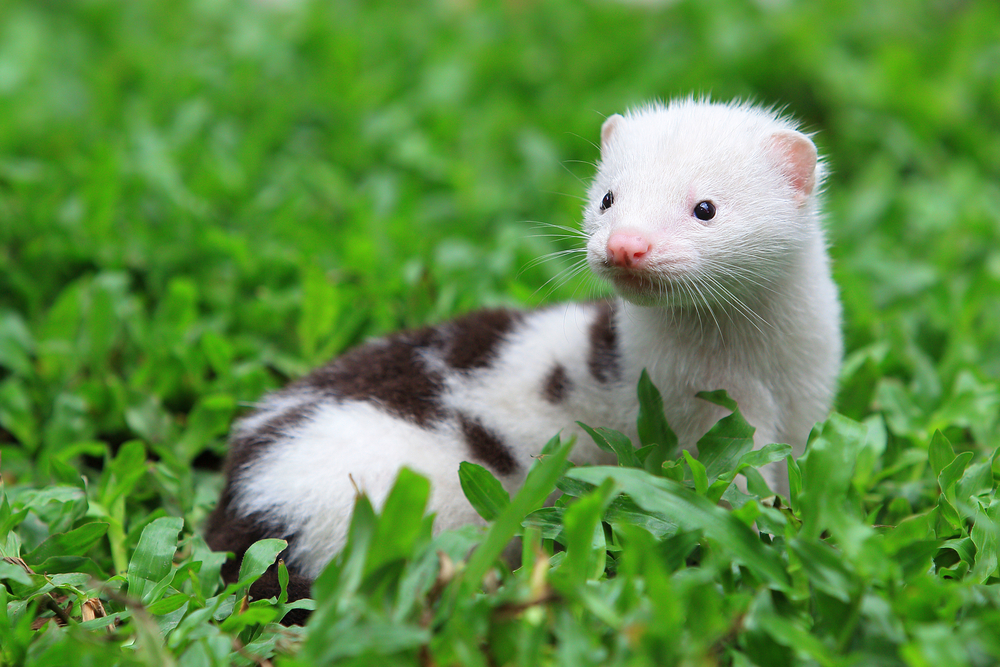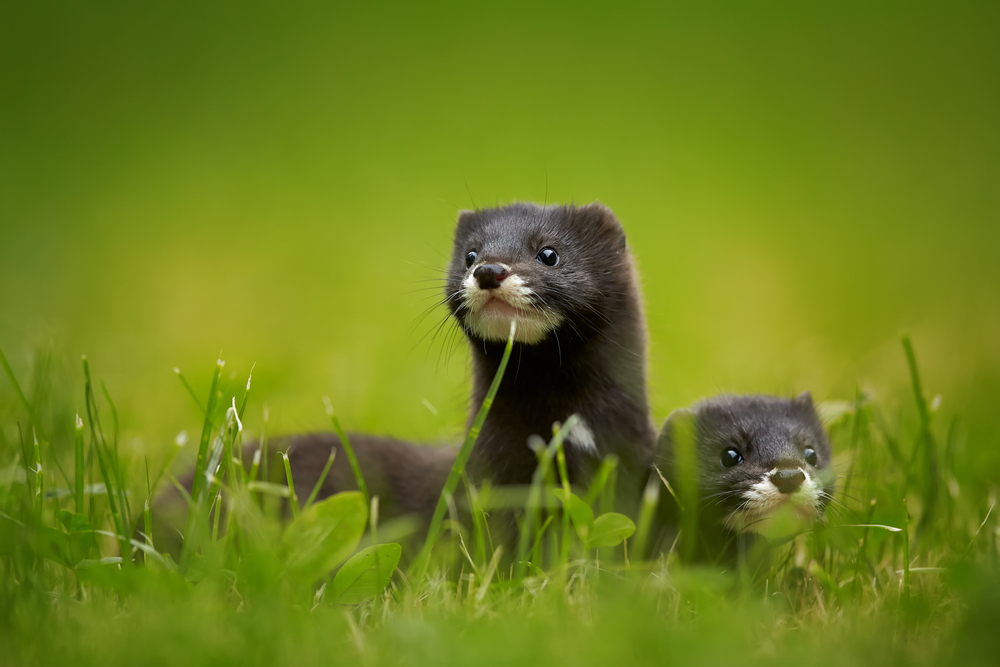Minks and weasels, both members of the Mustelidae family, share several characteristics but also have notable differences:
- Size: Minks are generally larger than weasels. Adult minks typically measure about 12 to 18 inches (30 to 45 cm) in body length, whereas weasels are smaller, usually measuring around 7 to 8 inches (18 to 20 cm) in body length.
- Fur: Minks have denser, softer, and more water-resistant fur, which has made them popular in the fur industry. Weasels have shorter and less dense fur in comparison.
- Habitat: Minks are semi-aquatic and are often found near water bodies like rivers, lakes, and marshes, where they are skilled swimmers. Weasels are more terrestrial, living in fields, woodlands, and similar habitats, though they can swim, they don’t typically live near water.
- Diet: Both are carnivorous, but minks, with their aquatic habits, often prey on fish, frogs, and water birds, in addition to small mammals and birds. Weasels primarily hunt small mammals like mice and voles.
- Behavior: Minks are known for being more solitary and aggressive compared to weasels. Weasels are generally more curious and active, known for their quick movements.
- Tail: Minks have a bushier, thicker tail compared to weasels, whose tails are generally thinner and less bushy.
- Coloration: While coloration can vary, minks typically have a uniform dark brown coat with a white patch under the chin, whereas weasels may have a more varied color pattern and often turn white in winter (in regions where this adaptation is necessary).
Understanding these differences is important for correctly identifying these animals in the wild, as well as appreciating the unique adaptations each species has evolved to thrive in its specific ecological niche.



































































